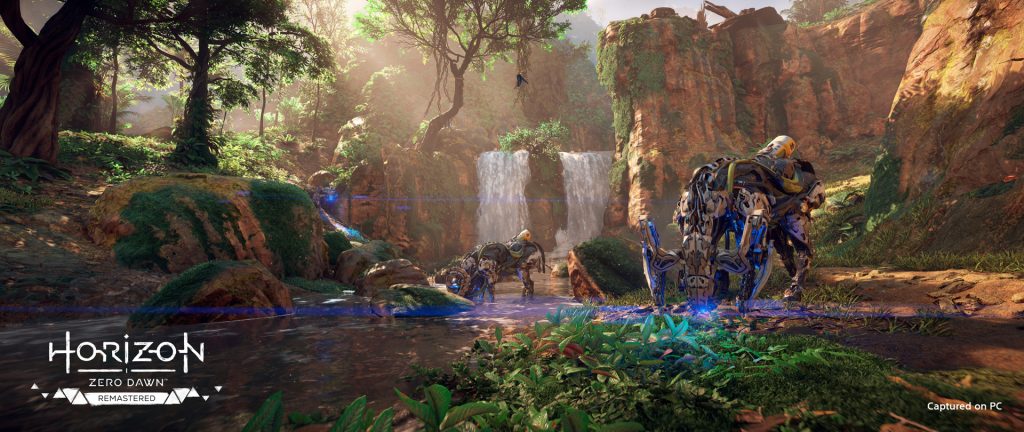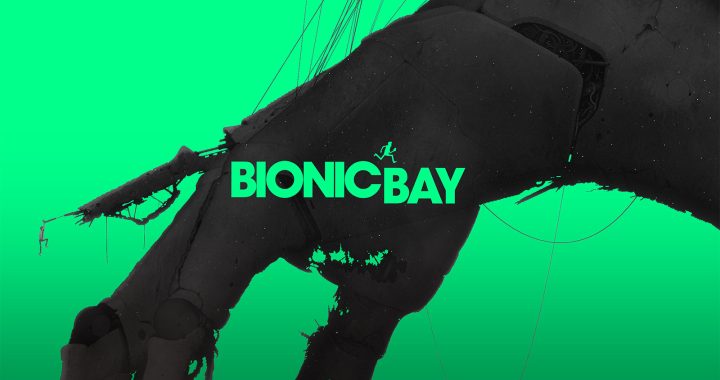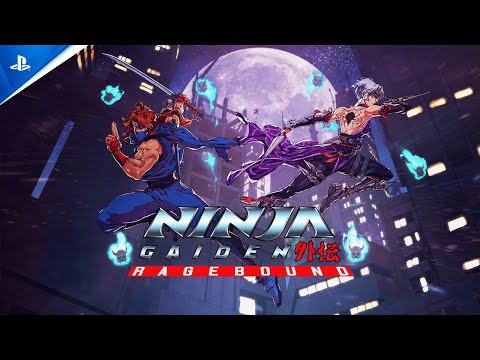Horizon Zero Dawn Remixed: A profound tumble into its modifications

Hello everyone, you may be familiar with Nixxes as the creator behind PlayStation 4 portaments for Computer, but we have also been working on a job of a really unique nature behind the scenes. Working closely with our friends at Guerrilla, we set out to create Horizon Zero Dawn Enhanced for both PS5 and Computers. We disclosed new features and technology in our statement last month, such as the audio team’s entire good mix, DualSense controller support, and fresh motion capture for conversations. I want to create some of the Nixxes team members now to give you more information on some of the improvements that have been made in the reissue.
Leaf plays a major role in portraying the beautiful, overgrown remains of a long-lost culture in the world of Horizon. Horizon Forbidden West’s foliage was deemed by our staff of environmental artists to become industry standards, and the visual quality of the artwork significantly improved. The group wanted to give the leaf the same care and attention when it was remastering.
Patrick Blankenzee, Senior Environment Artist:” To take the greenery in the remix up to the same level of value as in Horizon Forbidden West, we enhanced the shaders, textures, shape and leaf conversation. We evaluated all the leaf resources in Horizon Zero Dawn and upgraded them with all these brand-new functions. We carried out this for” several hundred of vegetation, trees, flowers, and trees.”
” We looked at the rainforests in the original activity and compared them to the idea skill. We found areas where we could improve and send the original goals closer, and the forest biome is one prime illustration of this. We injected fresh greenery and raised the value and density to new heights using potent legal technology. The rivers have also been upgraded with more diversity to bring them closer to the original goal as seen in the idea art”.
Working with the original group at Guerrilla, Environment Artist Julian Hofman:” We were able to ask questions and immediately compare their most recent work on Horizon Forbidden West to the job we were doing for the remix. This gave us some very distinct objectives to pursue, such as the recent lichen technology that has just been exhibited in Horizon Zero Dawn Remastered.
” For me, the leaf changes make the game feel more alive and render it live up to the extremely high standards of the Horizon activities. The end result is a clear earth that can be experienced for the first time.
Horizon Zero Dawn Remastered was significantly improved by Nixxes ‘ design team. One of the most significant shifts is the development of the living world.
Brian van Nunen, Senior Technical Game Designer, said,” To achieve this, we looked through every village, outpost, and city, and identified areas where we could enhance realism and soaking.”
” Creating the game for the PS5 allowed us to use the more memory we had, significantly increasing the number of non-player figures.” We added some more locations for NPCs to stand, sit, function and accomplish their needs. We gave them more diversified routines to improve movements and vitality in various places. Additionally, we attempted to make innovative use of already-existing movies. For instance, there is now a female feeding birds at the well in Meridian, reusing an active spreading animation. Also, we’ve made significant improvements to the atmosphere and activity level on the Meridian bridge.
The quality of the property used for the landscape, things, and buildings in the remix was considerably improved by our Tech Art group using the catalogue of next-gen materials that were created for Horizon Forbidden West.
Sander Bronkhorst, Senior Technical Artist:” We began by replacing all the Horizon Zero Dawn terrain materials with their new Horizon Forbidden West counterparts. This was only the first step, as the terrain materials for the sequel did n’t always match the original aesthetics. In order to address this, we carefully altered and polished each individual terrain material to maintain the original game’s aesthetic and feel while maintaining the visual integrity of the terrain materials in Horizon Forbidden West.
” In addition to updating all the terrain textures and materials, we incorporated features like deformable snow and sand. You can find snow deformation in the remaster, but it was only introduced in the Frozen Wilds expansion.
The ground in settlements like Meridian and Daytower needed a more distinctive aesthetic. Previously, Guerrilla used custom meshes and materials for the floors in these settlements, exclusive to these locations. We initially remastered the work by examining the possibility of enhancing texture resolution and adding parallax mapping to areas like brick floors. However, after initial tests, we came to the conclusion that in these particular circumstances, this would n’t give us the desired visual quality. Therefore, we decided to completely remake the floors in Meridian and Daytower from scratch. This involved creating new high-resolution geometry that supported the shapes made of the materials ‘ textures, setting up new materials, and painting blend maps.
Building Blocks are an additional feature of the game environment’s remaster updates. To give a bit of context here: Building Blocks are the individual assets that are used for set dressing the world of Horizon Zero Dawn. Consider things like buildings, plants, utensils, rocks, and even plants.
Natural and man-made building blocks fall under the categories of” building blocks.” For both types, we increased the resolution of the textures and adjusted the level of detail ( LOD ) ranges to ensure higher mesh fidelity”.
We created new high-resolution geometry for assets that would benefit from this by performing a separate pass on all man-made building blocks. We discovered that more detailed geometry was beneficial for buildings because the majority of them used brick-like textures on the walls without the geometry reflecting the shape of the bricks.
” To address this, we developed custom tools for generating more detailed geometry for these buildings. The artists manually adjusted and tweaked each individual building for the best visual result using these tools to create new geometry.
What is the meaning of this?
A big change in Horizon Zero Dawn Remastered is the addition of over 10 hours of additional motion-capture data for characters, directed and captured by Guerrilla at their motion Capture Stage in Amsterdam, making the game’s conversations much livelier and in line with those in Horizon Forbidden West. Our technical artists and animators were responsible for implementing this additional data.
As Horizon Zero Dawn has almost 300 conversations and well over 3100 dialog options, we needed to find a way to easily incorporate these numerous updated animations into the conversations, according to Mark Bazelmans, Senior Technical Artist. We created a tool with Python to process the almost 2500 mocap files that Guerrilla provided to replace the original animation in the conversations, removing deprecated events and replacing those with the mocap and setup”. Then we concentrated on developing a Maya pipeline to allow our animators to quickly load, edit, and re-export the individual mocap files for any additional edits, such as finger animation, art direction feedback, and fixes. The dialogue and subsequent dialog options that were available to animators could either be chosen from a list that had already created the scene or simply opened. Our tool referenced the characters and imported the dialogue audio, so the animators could time the movement better and create the camera cuts and layout. Later, we expanded this pipeline to include existing animations for both conversation and cinematics because some of these also required editing. Our animators could then log into Guerrilla’s DECIMA engine to edit or modify the conversation as it was updated.
Alexander Georgiev, Animator: Since all mocap footage comes from actors with different height or gender, there was a lot of data that needed to be covered and checked. For instance, characters look too far up or down, shoulders not matching the rest of the pose, arms stumbling through clothing, and fingers that are too static.
We created tools to help us to solve this effectively. With these tools we visualized helpers that brought a closer connection between working in Maya and the DECIMA engine. One instance was that because the eyes were a complex, automated system, it was not possible to see them moving in the same way as they did in the DECIMA engine. We used the toolset to create a head and eye-aim assister that made it easier to see where the characters were, and from that we were able to adjust a particular character’s head.
” We made small, automated scripts to fix shoulders and arms clipping. All of these tools allowed the animators to concentrate on improving the characters ‘ acting so that they could support their claims more. By creating these tools, we created a robust workflow and significantly reduced the amount of time iterating per conversation.
Mark Bazelmans, Senior Technical Artist:” Alongside the updated body animation, new facial animations were captured for the conversations. Initial impressions were that this would be easy to overwrite and replace, but after reviewing some of the results, we made the decision to create a pipeline to edit the updated facial animations.
We developed Maya tools that could convert a proprietary facial animation file with audio to a Maya scene that has a talking head. We also wrote our own exporter that could then export a Maya scene back to the same proprietary format.”
We did a pass on the camera and lighting setup for both conversations and the cinematics, in addition to updating the animations in conversations. We batch-tested the camera setup and values for the cameras. In most conversations, the automated pass did n’t quite give the desired result because the contrast between the original movement and the new mocap was too big. The new body animations make for more expansive movements, frequently resulting in characters leaving the frame or being completely offscreen. Therefore, a manual pass was created by our Camera Layout Artists, assisted by our innovative DECIMA tools, to make camera and settings editable.
” We updated the lighting toolset to be closer to that in Horizon Forbidden West, which allows for editing settings of character and environment lighting across similar shots using a visual representation of shots. A single setup for each character in a conversation that would apply to all dialog options in a conversation was in charge of lighting. Then, with the option to edit individual shots as necessary, our lighting designers could work their magic on a particular shot type and have the same effect on all other similar shots of the character. This way lighting had maximum control with as little tweaks as possible.”
Guerrilla and Nixxes Lighting artists shared the work for world lighting and cinematic lighting, with Guerrilla providing direction and technical assistance. The new Nubis cloud system from Horizon Forbidden West was created by the Atmospherics team at Guerrilla to recreate the dramatic cloudscapes from Horizon Zero Dawn. The cherry on the cake was the creation of the set piece volcano cloud in the Frozen Wilds expansion, using a combination of the latest innovations in voxel cloud rendering, first pioneered in the Burning Shores expansion for Horizon Forbidden West, and traditional particle VFX.
In Horizon Zero Dawn Remastered, it was crucial to maintain the intense mood lighting, making sure a seamless transition when playing both games simultaneously. Myvanwy Broers, Niels Iburg, and Thomas Schrama, the lighting artists for Nixxes, discuss their approach and workflow.
” A lot of the world lighting had to be rebalanced or re-lit from scratch to reach the same mood and to bring it in line with the slightly updated art direction. We used some workflow improvements for the remaster to make the process quite enjoyable for Horizon Forbidden West.
We revised all the atmospherics settings that control the biomes in the game world to make the most of the improved features. This included changing the light intensities to Physically Based Rendering values. This includes detailed lighting in locations like caves and ruins, as well as the sun and the moon itself. Think about the color of the sun, the intensity of the glow, and other factors.
” This meant that after rebalancing the light intensities into PBR, it was necessary to relight entire areas to create the best visual fidelity possible. It was a pleasure to go back to these renowned locations.
We used Guerrilla’s prefab system, an object that can be placed anywhere and contains geometry, particles, sound, and lights, to speed up our workflow. All these assets exist as referenced content within a prefab, which means that if the value of a torch light needs adjustment, this will simultaneously happen for every torch in the world. This enables rapid change on a large scale and high iteration speed.
A versatile lighting system that offers the precise light bounce Horizon Zero Dawn Remastered requires, “light bakes are an important aspect of the lighting.” The quality of such bakes is adjustable per volume that we set as lighters, which is great when we require the light bounce to be more detailed in an area without affecting the rest. Horizon Forbidden West’s improved baking system allows for at least twice as much detail in the light bounce as in Horizon Zero Dawn Remastered.
We wanted to match Horizon Forbidden West’s art direction and visual quality with lighting in conversations and movies. This, combined with all updated animations, motion-capture and camera shots, meant we built all the cinematic lighting in the remaster from scratch. We utilized a lot of the brand-new lighting and workflow that was developed for the cinematic lighting in Horizon Forbidden West.
Each character was surrounded by a lighting rig that ran roughly two lights in” Horno Dawn.” For the remaster we used the upgraded lighting rig from the sequel, which uses five lights in total: one key-light, two profile-lights and two rim-lights. These lights are then tweaked to their position, stance, color, and intensity on a per-shot basis.
What is the meaning of this?
Horizon Zero Dawn Remastered features significant upgrades to character models and how they react to lighting. From Horizon Forbidden West, many improvements have been made in areas like outfits, skin tones, and detail.
Working on the varied cast of characters in the remaster was a significant undertaking, said Patrick Blankenzee, Senior Environment Artist. We enhanced various shaders to improve the visual quality and made changes to ensure the models react better to the new lighting in the remaster. We gave Peach fuzz, upgrades to hair, eyes, and materials to Aloy’s model, both adult and child, in addition to the full cinematic treatment.
We wanted to make changes to Aloy’s outfit, hair, and skin to match the look envisioned in the concept art, as well as bring the model up to par with the quality of the improved model for adult Aloy, and so we looked at the original concept art as a child.
” In Horizon Zero Dawn, only the character model for Aloy reacts to environmental elements like weather. To give the same level of interaction to all companion characters for the remaster, we wanted to give the entire world a cinematic feel. You’ll now see Aloy and her companions reacting to warm and cold weather, for instance.
On behalf of the teams at Nixxes and Guerrilla, we cannot wait for you to experience Aloy’s journey ( again ) with all the visual enhancements, upgraded features and tech improvements.
Horizon Zero Dawn Remastered is currently available for pre-order and will launch on October 31 on PS5 and PC ( Steam, Epic Games Store ). PlayStation Network accounts must be created on a PC.
Existing owners of Horizon Zero Dawn and Horizon Zero Dawn Complete Edition can upgrade to the digital version of Horizon Zero Dawn Remastered for$ 9.99. For more information about upgrading, check out the previous PS Blog post.
 The doing of hand-crafted pixel-art platformer Bionic Bay, out April 17 on PS5
The doing of hand-crafted pixel-art platformer Bionic Bay, out April 17 on PS5  Warm experience Palia opens its doors May 13 on PS5
Warm experience Palia opens its doors May 13 on PS5  Ninja Gaiden: Ragebound unveils a minute functional character
Ninja Gaiden: Ragebound unveils a minute functional character  Google claims it won quarter of its dominance situation, and will charm the remainder
Google claims it won quarter of its dominance situation, and will charm the remainder  Amazon’s best Apple bargains:$ 299 Apple Watch Series 10, tablets & MacBooks up to$ 600 off
Amazon’s best Apple bargains:$ 299 Apple Watch Series 10, tablets & MacBooks up to$ 600 off  Apple brings sport card sharing to Apple Sports
Apple brings sport card sharing to Apple Sports